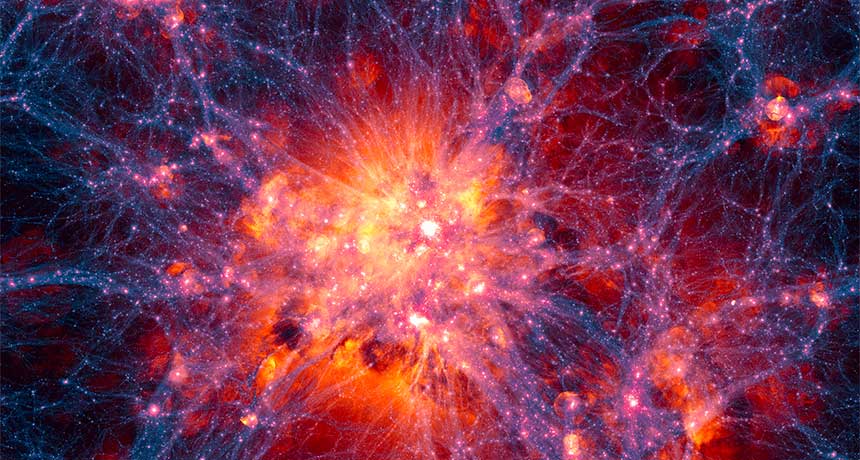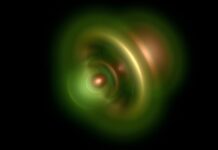In a ground breaking discovery, scientists have finally detected the cosmic web responsible for ‘gluing’ the ancient cluster of galaxies 12 billion light years away by a network of gas filaments.
Using the European Southern Observatory’s Very Large Telescope, they were able to identify individual filaments of intergalactic gas that make up a web-like structure between galaxies by mapping out the light emitted by hydrogen within a galaxy cluster called SSA22 (a proto-cluster, meaning it is a cluster of galaxies in its infancy).
The existence of the cosmic web – a vast, mysterious structure that links up far-flung galaxies – is central to current theories of how galaxies first formed following the big bang. However, evidence of the cosmic web had remained largely circumstantial until now; there had only been indirect evidence to suggest it existed.

For the first time, though, the scientists could directly detect the cosmic web by using intensive equipment designed to pick up the faintest of structures with the help of intense light from young, star-forming galaxies. Prof Michele Fumagalli, an astrophysicist at Durham University and co-author of the study, noted:
“It is very exciting to clearly see for the first time multiple and extended filaments in the early universe. We finally have a way to map these structures directly and to understand in detail their role in regulating the formation of supermassive black holes and galaxies.”
It is said that galaxy clusters, which can contain hundreds of thousands of galaxies, are the most tightly gravitationally-bound structures in the universe. It is believed that 60% of the hydrogen created during the Big Bang can be seen as long filaments strung out across space in the cosmic web – filamentary structures permeating the entire universe. Apparently, there is a dark cosmic web (made of dark matter), and a luminous cosmic web (made of mostly hydrogen gas).
Since the dark matter does not emit or absorb light, it cannot be observed with usual telescopes. Likewise, since the cosmic web filaments are very diffuse and do not emit sufficient light, they are hard to be detected. That’s the reason why we could neither detect dark matter nor the cosmic web previously (it had been observed before but only as short blobs of gas beyond galaxies).
Erika Hamden, an astrophysicist at the University of Arizona, said:
“These observations of the faintest, largest structures in the universe are a key to understanding how our universe evolved through time, how galaxies grow and mature, and how the changing environments around galaxies created what we see around us.”
It is thought that the cosmic web is the scaffolding of the cosmos and provides the framework for galaxies to form and evolve. The latest study, by revealing supermassive black holes, star bursting galaxies, and lots of active stars all at the intersections between the filaments, supports the theory.


Hideki Umehata, a scientist the Riken Cluster for Pioneering Research and the University of Tokyo, and lead author of the study, explained:
“This suggests very strongly that gas falling along the filaments under the force of gravity triggers the formation of star bursting galaxies and supermassive black holes, giving the universe the structure that we see today. Now we have been able to clearly show that these filaments are extremely long, going even beyond the edge of the field that we viewed. This adds credence to the idea that these filaments are actually powering the intense activity that we see within the galaxies inside the filaments.”
The study paves the way for a more systematic, two-dimensional mapping of gas filaments that can tell us about their motions in space. In addition to looking at galaxy clusters full of bright objects, we can also trace the cosmic web’s emission in radio or X-ray wavelengths. Furthermore, detailed maps of the gas filaments can help us trace the more hidden dark matter structure and, ultimately, help us understand its mysterious nature.
The findings of the study have been published in the journal Science.






